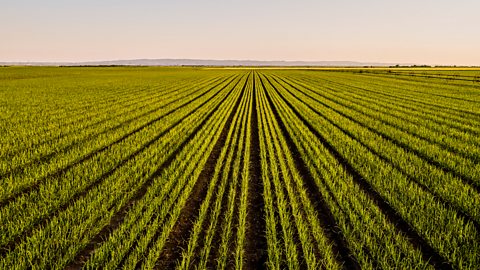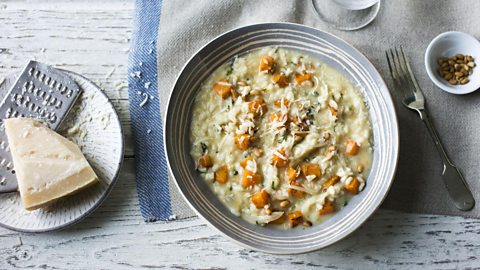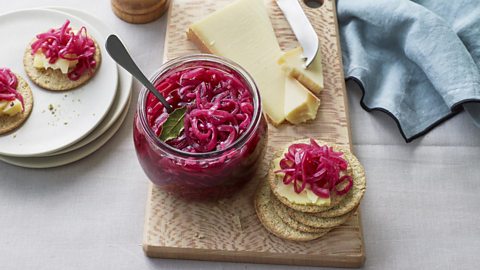The mysteries of the world's most popular vegetable
By Fliss Freeborn
Grown in vast numbers across the globe, this small but mighty veg is an undisputed culinary staple. HereŌĆÖs how to make the most of it and use it to improve your cooking.

Where would we be without onions? From bhuna to bolognese, this inaugural allium forms the foundation of countless dishes all over the world.
In addition to being a key base ingredient for building flavour in food, the humble onion also takes on a starring role in lots of dishes: think French onion soup, onion gravy and ŌĆō best of all, as far as IŌĆÖm concerned ŌĆō onion rings.
Given how versatile onions are, itŌĆÖs no surprise that they are the (although that does depend whether you class the tomato as a vegetable) and are commercially grown in over .
But do we really know our onions when it comes to this culinary all-rounder? If you're ever confused about whether to use red or brown, still can't work out the difference between sweating and saut├®ing, and often ponder why chopping onions gets you so emotional, then sit tight ŌĆō you're about to finally get some answers.
What sort of onions should I use?
Brown onions
When a recipe simply calls for 'onions', without any further specification, itŌĆÖs best to assume youŌĆÖll be using brown onions, with their tanned, papery skin and white, tightly packed layers inside. Brown onions (confusingly called ŌĆśyellow onionsŌĆÖ in the US) are most commonly used in home cooking due to their abundance, low cost and flavour, which transforms from bitter and sulphurous when raw to mellow and sweet when cooked.
Butternut squash risotto
Tom Kerridge's butternut squash risotto uses onion as a base ingredient

Brown onions sold in supermarkets tend to vary in size and pungency, but all are hugely versatile: they can be used as a base in practically any dish from shepherdŌĆÖs pie through to risotto, and shine in title roles such as cheese and onion pasties and sage and onion stuffing.
White onions
Less common in UK supermarkets than in Europe and South America, white onions tend to be bigger and milder, with a thinner, softer skin. In cooking, they're pretty interchangeable with brown onions, but their larger size makes them ideal for cooking in large volumes as theyŌĆÖre easier to peel at scale.
Red onions
Red onions have a slightly sharper flavour than their white or brown cousins, along with a fruiter, more acidic tang. This makes them suited for being used raw ŌĆō in salads and burgers, for instance. Alternatively, pickled red onions are fantastic preserved in vinegar, adding colour and tang to any sandwich, salad or toastie.
Red onion pickle
Vinegar, salt and sugar transform raw red onions into a versatile pickle

Beyond this, red and brown onions are generally interchangeable in foods like curry, ragu, stock and stew. Both caramelise equally well too, turning soft and sweet over a low heat.
However, in naturally paler dishes such as quiches or frittatas, you might want to stick with brown or white onions, as red onions' colourful pigments can potentially leach into the surrounding ingredients when cooled.
Shallots
Smaller, sweeter, and ŌĆō interestingly ŌĆō more closely related to garlic than onions, shallots tend to fill a slightly different kitchen niche. You can often use shallots instead of red or brown onions in cooking, but itŌĆÖd be a bit of a waste seeing as theyŌĆÖre far more expensive and their subtlety can often get lost among other ingredients. Instead, their floral sweetness is better suited to being roasted whole in their skins, used as a filling for a savoury tart, or for making dressings. Think of them as more of a pop-star ingredient, as opposed to backing dancers.
Spring onions
Also known as scallions and salad onions, these are just regular onions that have been picked while still very young, before the white, rooty end has had time to swell and become bulbous.
As theyŌĆÖre so young, spring onions have a milder flavour than their grown-up alternatives, and everything from the crisp white end through to the green, fleshy stem is good to eat. They work both raw and cooked and are perfect in stir-fries and salads, and are a popular ingredient in South East Asian dishes.
Pork and vegetable stir-fry
This pork and vegetable stir-fry uses spring onions to give extra sharp and sweet flavour

The science of cooking onions
When exposed to any sort of heat, the sulphuric compounds in onions ŌĆō which can be credited with causing those tears ŌĆō will be denatured, which is why cooked onions, no matter whether theyŌĆÖve been boiled, baked, fried or steamed, will taste completely different from raw ones.
However, onions are particularly interesting vegetables in that they can behave differently depending on small variations of cooking technique. This is due to them having both a (specifically glutamic acid, the ŌĆśGŌĆÖ in MSG) and a high sugar content, which means two different reactions can take place when the vegetable is exposed to heat. The Maillard reaction comes first, making the onions turn brown and develop that savoury nuttiness, and then the remaining sugars start to caramelise, which is what's happening when you cook onions down for a long time and they become super soft and sweet, and take on a chestnut colour.
It is controlling these two reactions using heat and moisture which gives the different results you get after sweating, browning and caramelising.
Sweating
When a recipe calls for you to sweat your onions until translucent, it usually wants you cook them in a little fat and a pinch of salt over a low heat with the lid on, until they're completely soft but haven't taken on any colour. This often takes much longer than people realise.
The lack of colour is because of the steam, as water inhibits the Maillard reaction. The salt is helping here too, drawing out moisture from the vegetable.
Sweating onions helps them to melt into the background of a dish for a more subtle flavour; things like vegetable soups and risottos require onions to be sweated before other ingredients are added. By sweating your onions slowly and gently, youŌĆÖre almost guaranteed to not let them overpower a dish.
│¦▓╣│▄│┘├®Š▒▓į▓Ą
│¦▓╣│▄│┘├®Š▒▓į▓Ą onions usually means to cooks them in a dash of fat over a medium heat, without a lid. YouŌĆÖll want to keep things moving, seeing as thereŌĆÖs less moisture content to form a barrier between the panŌĆÖs surface and the onions, so burning is more likely.
This process is more of a balancing act than sweating because you want to encourage the Maillard reaction to darken the outside of your chopped onion while also making sure the insides are cooked through. A splash of water every now and again can help stop any sticking while encouraging the insides of the onions to cook through. Overcrowding the pan when browning onions wonŌĆÖt do you any favours though ŌĆō make sure you only have one layer, so it all cooks through evenly.
Saut├®ed onions are the basis for many meaty stews and do well in the likes of frittatas and some pasta dishes.
Caramelising
To caramelise onions, cook them slowly over a really gentle heat, adding a splash of water if they start to stick to the pan or brown too quickly. Caramelising onions can take anywhere from 15 to 45 minutes ŌĆō the longer you cook them, the more sugars will caramelise and turn your onions richer and stickier. If youŌĆÖve got a slow cooker, you can caramelise onions in there too, and easily turn them into a lovely onion soup.
A crying shame
Before you cut into it, thereŌĆÖs no way of knowing if a particular onion is going to be a tear-jerker or not. However, to help prevent streaming eyes, you can try several things.
Firstly, putting onions in the fridge to chill them briefly before you start chopping is thought to make their sulphuric compounds less volatile. Also, cutting them with a very sharp knife may mean youŌĆÖre rupturing fewer of the cell walls that contain the , which make you cry.
Putting the extractor fan on can also help with eradicating any pungent odours and that irritating gas. If all else fails, wearing swimming goggles really does work (yes, that comes from previous experience ŌĆō sometimes, needs must).
Oh, and to get rid of that fragrant onion smell all over you fingers? Rub them on anything made of stainless steel. The metal , removing them from your skin. Science, hey!
Originally published March 2023